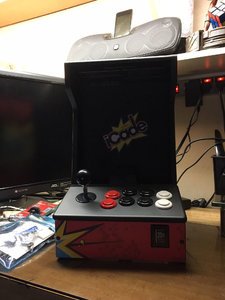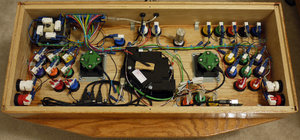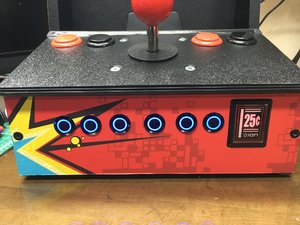RanceJustice
Supreme [H]ardness
- Joined
- Jun 9, 2003
- Messages
- 6,629
Good morning ladies and gentlemen!
Between thriving emulation of old classics on platforms like MAME and FinalBurnAlpha, retro-style modern titles from shmups to beat em ups, and the fighting game community that is resurgent on PC and console alike, many users are finding interest in Arcade Sticks!
Despite the popularity of games that shine when using such a peripheral, discussions thereof are somewhat of a niche when it comes to hardware. This can be a little daunting when it comes to deciding to invest hard earned money in what can be relatively expensive peripherals, especially if one isn't well versed on the options in the market and ramifications thereof. It is of note that while there are quality off-the-shelf sticks for many price ranges, a great many users enjoy customizing and modifying their arcade sticks for both performance and aesthetics.
Thus, I wanted to make a thread dedicated to information and discussion in regards to Arcade Sticks. I'm not aware of the level of interest or experience, so I need your input! How many of you have an arcade stick? What do you like/dislike about it? What games do you play and on what platform? Anyone interested in or considering a purchase of an arcade stick? What information would help you make your choice?
Would anyone be interested in an overview of modern off-the-shelf and/or custom sticks? Discussion of quality hardware/components going into modding or building today? I'm planning to assemble a new stick myself soon, so if there's interest in a build log I may be able to create one and post it as well.
Feel free to post pictures of your arcade sticks!
Between thriving emulation of old classics on platforms like MAME and FinalBurnAlpha, retro-style modern titles from shmups to beat em ups, and the fighting game community that is resurgent on PC and console alike, many users are finding interest in Arcade Sticks!
Despite the popularity of games that shine when using such a peripheral, discussions thereof are somewhat of a niche when it comes to hardware. This can be a little daunting when it comes to deciding to invest hard earned money in what can be relatively expensive peripherals, especially if one isn't well versed on the options in the market and ramifications thereof. It is of note that while there are quality off-the-shelf sticks for many price ranges, a great many users enjoy customizing and modifying their arcade sticks for both performance and aesthetics.
Thus, I wanted to make a thread dedicated to information and discussion in regards to Arcade Sticks. I'm not aware of the level of interest or experience, so I need your input! How many of you have an arcade stick? What do you like/dislike about it? What games do you play and on what platform? Anyone interested in or considering a purchase of an arcade stick? What information would help you make your choice?
Would anyone be interested in an overview of modern off-the-shelf and/or custom sticks? Discussion of quality hardware/components going into modding or building today? I'm planning to assemble a new stick myself soon, so if there's interest in a build log I may be able to create one and post it as well.
Feel free to post pictures of your arcade sticks!
![[H]ard|Forum](/styles/hardforum/xenforo/logo_dark.png)







